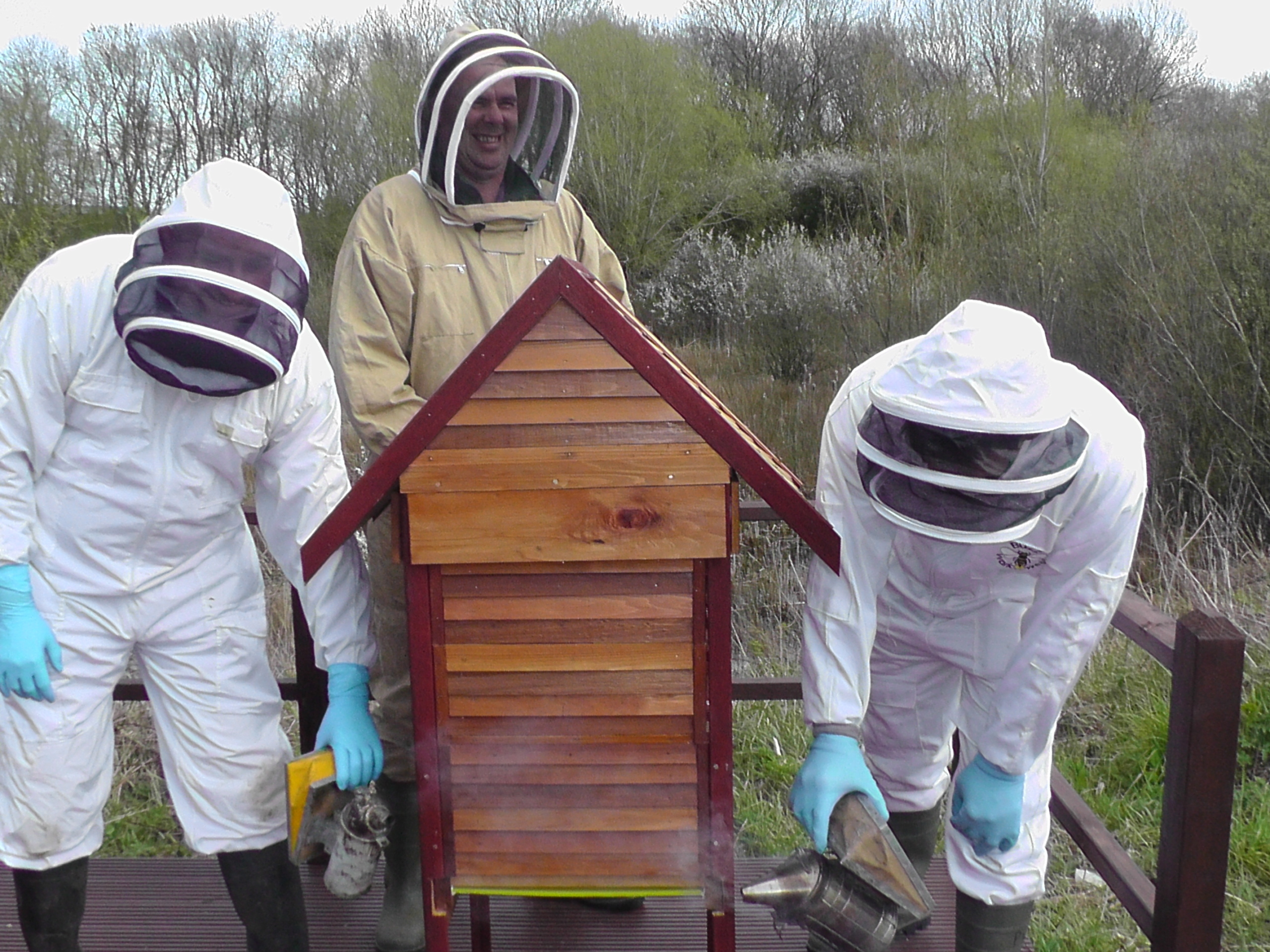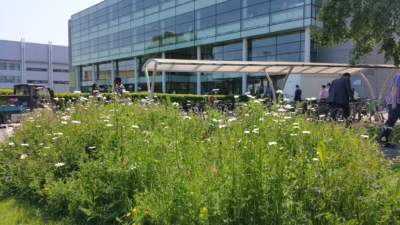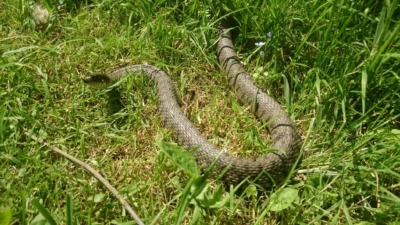Cranfield is going bee crazy!
24/06/2016

The Board for Energy and Environment (BEE for short) was established in 2011 as a subcommittee of the Executive to oversee energy and environmental strategy for the University. It turns out to have been aptly named as, five years later, not only do we have a very active programme of work to improve our environmental performance but bees feature very strongly.
 Much of the environmental performance delivery is organised by us in the Energy and Environment Team in Facilities. With responsibility for the grounds maintenance contract for the University it was natural that we would take opportunities to develop biodiversity. We have increased wildlife habitats on campus significantly, and now have 2 ha of land set aside as Biodiversity Action Areas (or BAASs). We are lucky on this campus to be a host to a variety of different habitats including the brook, woodland, scrubland and open grasslands.
Much of the environmental performance delivery is organised by us in the Energy and Environment Team in Facilities. With responsibility for the grounds maintenance contract for the University it was natural that we would take opportunities to develop biodiversity. We have increased wildlife habitats on campus significantly, and now have 2 ha of land set aside as Biodiversity Action Areas (or BAASs). We are lucky on this campus to be a host to a variety of different habitats including the brook, woodland, scrubland and open grasslands.
So what motivates us to create so much space for wildlife on campus? Firstly, we were inspired by Bee Orchids. These are beautiful flowers which are unique in the way they mimic bees with little furry bodies and a special ‘female bee’ scent. They grow sporadically on campus and bloom around June and July time. They also happen to be the county flower of Bedfordshire. We try our best to make sure they are protected on campus by leaving areas of grass uncut to allow them to grow naturally.
Secondly we were inspired by a University research project set up to determine the eco services provided by wild flower meadows in an urban environment – find out more about Urban BESS). One key beneficiary of wildflowers is the bee. Bees are a species vital to our survival as pollinators of our crops and flowers. With the loss of wild flowers, pressure of disease, use of neonicotinoid pesticides, and rapid urbanisation, it is no wonder the population has declined significantly over the last 100 years. Although our wildflowers provide a food source for bees, we have taken the initiative one step further and provided welcoming homes for bees. We now have three bee hives installed on campus which are managed by our grounds team, Nurture. Look out as there maybe Cranfield honey on sale soon!
 We celebrate our flora and fauna on a regular basis with campus ‘Lunchtime Biodiversity Walks’. Here, staff and students alike join us for wildlife spotting on campus. They have the opportunity to learn as well as to relax and take a break from their offices. We are also encouraging our staff and students to become ‘wild’ about biodiversity by taking part in a Wildlife Watch campaign asking everyone to submit photos. So far we have had submissions of grass snakes, geese, otter spraints and water shrews all spotted on our grounds. These sightings are added to our database which will build a bigger picture of what we have on campus. This will inform our biodiversity action plan and help shape our future grounds management on campus.
We celebrate our flora and fauna on a regular basis with campus ‘Lunchtime Biodiversity Walks’. Here, staff and students alike join us for wildlife spotting on campus. They have the opportunity to learn as well as to relax and take a break from their offices. We are also encouraging our staff and students to become ‘wild’ about biodiversity by taking part in a Wildlife Watch campaign asking everyone to submit photos. So far we have had submissions of grass snakes, geese, otter spraints and water shrews all spotted on our grounds. These sightings are added to our database which will build a bigger picture of what we have on campus. This will inform our biodiversity action plan and help shape our future grounds management on campus.
Looking to the future, we are working with our academics to link our activities to their research, developing the campus into a ‘living lab’. Our campus will become an exciting, living, breathing laboratory which will be used for ecological and environmental research. Please have a look at a presentation by students who worked with us this year reviewing options for living lab projects.
So if you are also wild about wildlife, or bee obsessed like us, why not join our biodiversity mailing list green@cranfield.ac.uk? We will send you regular updates our events and initiatives. We also work with the Wildlife Trust and Forest of Marston Vale to host volunteering events so you can get involved in hands-on conservation work. You can also follow us on Twitter. Don’t miss out!
Categories & Tags:
Leave a comment on this post:
You might also like…
Automotive Engineering: From student to hypercar innovation at Rimac
We sat down with recent graduate Thomas Perrin, to discuss how his year on the MSc in Automotive Engineering at Cranfield University propelled him from the lecture hall directly into the ...
What this year at Cranfield really meant to me
Every Cranfield journey is unique. In this alumni reflection, Zachea Scicluna shares what her year at Cranfield truly meant, from facing uncertainty to gaining hands-on experience in industry-backed projects. I’ve been reflecting (and delaying) ...
Preparing for assignments and exams?
Sorry! We know it seems a bit mean to mention the exams in January rather than looking forward to the break before it! However, we know many of you will be thinking about your forthcoming ...
Screening for FTSE 100 companies on Bloomberg
So you’re researching an index and need some data on its constituent companies? Bloomberg’s Equity Screening tool makes light work of this, not just for the FTSE, but for indices, exchanges and sectors worldwide. Type EQS ...
Accelerating my future: How Cranfield put me on the fast track to automotive safety innovation
Hello! I’m Michaela Kaiser, and I’m thrilled to share my journey studying abroad. I’m from Calgary, Canada, and I recently graduated from Cranfield’s MSc Automotive Engineering course. My path to Cranfield ...
From Myanmar to Cranfield: My path to Renewable Energy
As someone who is passionate about sustainability, my career goal is to build a path in the renewable energy sector. My aspirations comes from the benefits of developing sustainable energy sources and ensuring energy ...






